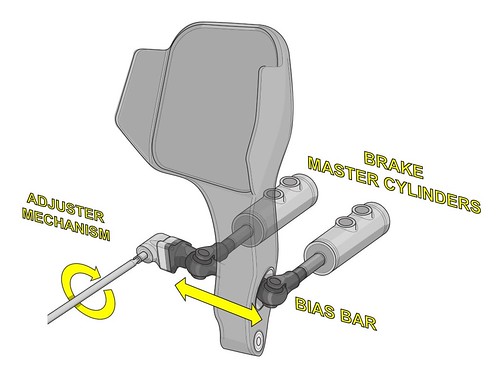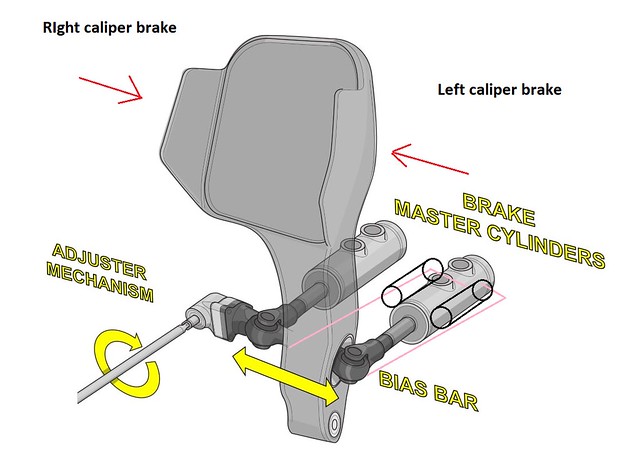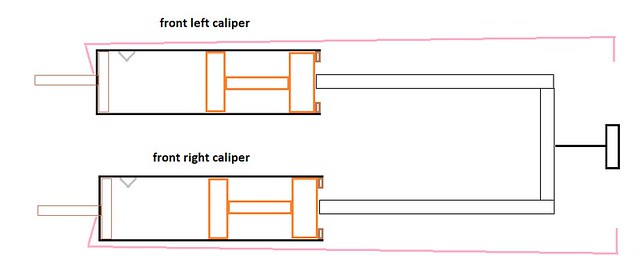
But why limit to just one movement, when the pedal is not in use, use the left and right movement to steer the car during an under-steering situation,

Typical left and right master cylinder:

The simplest solution, decouple the front pistons, one main split into two rods, then opposite side pistons controlled by the movement of the pedal, left or right, for each caliper:

It gets more complicated if you want to use a single brake rod, so put a stopper on the secondary piston (can be hydraulic or electronic), also possibly go to an internal compensating port, using something similar to how a pressure differential valve works but with some tweaks:

Then the circuit looks like this:

The rear can be done in a similar way but since rear can be brake by wire, I would use the brake by wire electronics to activate the caliper you need to load up on the rear. Now you can continue to apply the brake to the side driver wants. It's unconventional and would take some getting used to.
